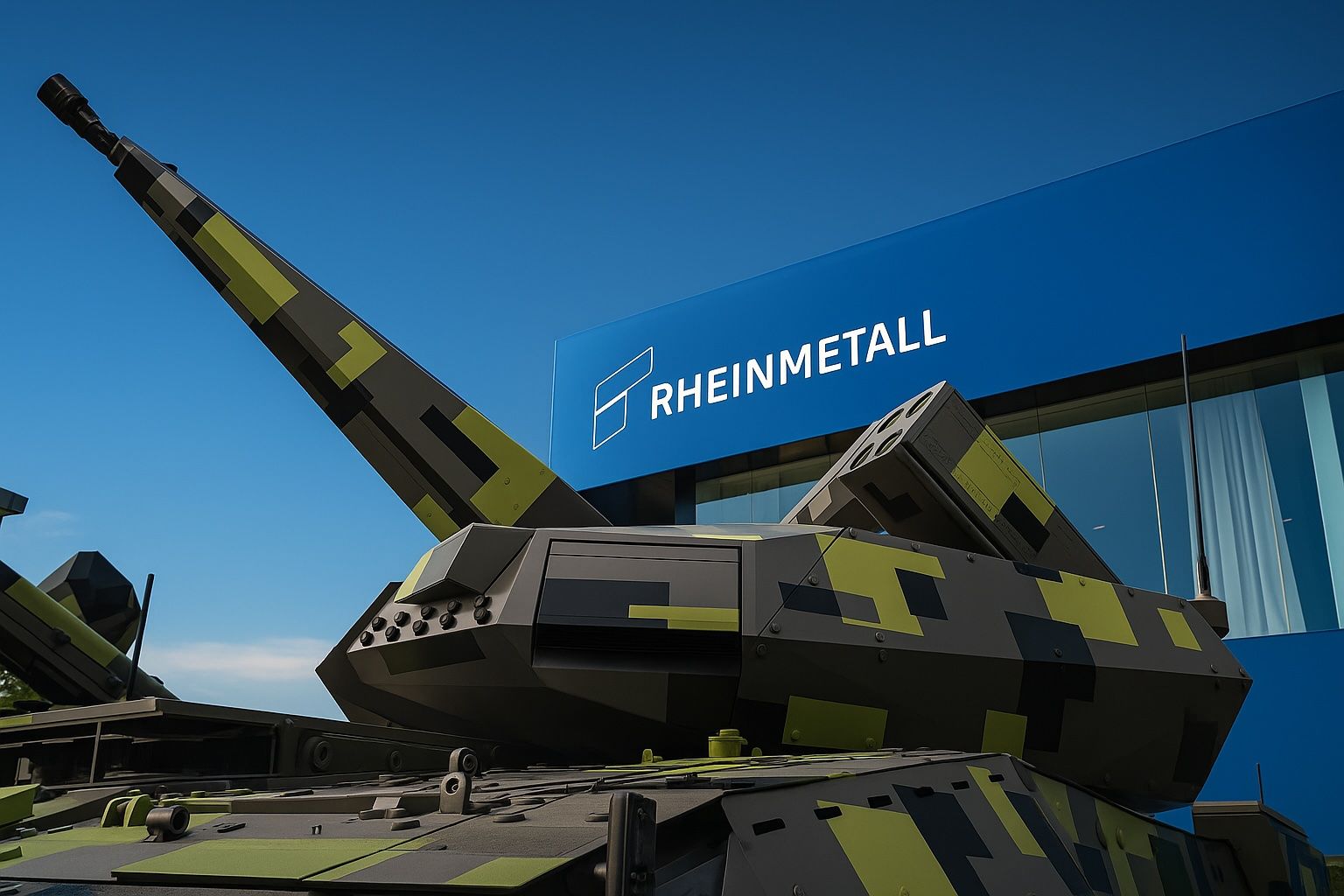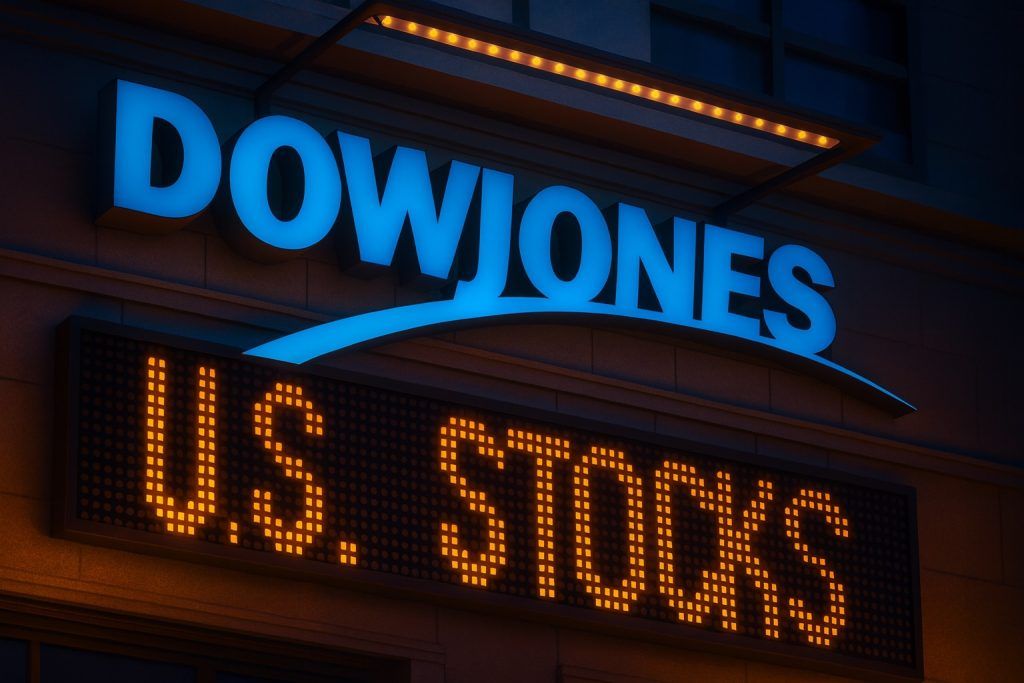On Friday, 14 November 2025, shares in German defence group Rheinmetall AG (RHM) extended their recent correction, trading around €1,670–1,680 in Xetra by midday – a drop of roughly 4% versus Thursday’s close of €1,750.50 and around 16–17% below the early‑October record high of €2,008. [1]
The move comes as investors digest a politically sensitive twist in a multi‑billion euro frigate programme for the German navy, fresh analyst assessments ahead of Rheinmetall’s Capital Markets Day, and new disclosures on major shareholders – all against the backdrop of strong underlying defence demand in Europe. [2]
1. What moved Rheinmetall’s share price today?
By late morning and into early afternoon on 14 November, several intraday reports from financial portals showed Rheinmetall among the biggest decliners in the DAX:
- Around 09:28 CET, the stock was already down about 2.7% at €1,703.50, after opening at €1,726.50. [3]
- By 12:28 CET, losses had widened to roughly 4.3% at €1,674.50, with an intraday low near €1,666 on Xetra. [4]
- Other trackers showed similar levels, with quotes around €1,679.50 and a day‑to‑date performance of about –4.3%. [5]
Even after today’s drop, Rheinmetall remains a heavyweight in the German blue‑chip index:
- The company’s market capitalisation is around €77–78 billion, giving it roughly 3.7% weighting in the DAX. [6]
- Over the past twelve months, the share price is still up more than 200%, and year‑to‑date gains are close to +180% according to wallstreet‑online data. [7]
In other words, today’s slide marks a sharp setback within a still very strong multi‑year rally driven by Europe’s rearmament and Rheinmetall’s order boom.
2. F126 frigate contract: why TKMS suddenly matters
The immediate trigger for the sell‑off is a new report on the German navy’s F126 multi‑purpose frigate programme, a contract worth several billions of euros.
A detailed piece on finanzen.ch – echoed by finanzen.net and other German outlets – outlines the situation as follows: [8]
- The German defence ministry is reassessing how to proceed with the planned purchase of six F126 frigates.
- Earlier plans reportedly envisaged shifting the role of general contractor to Naval Vessels Lürssen (NVL), which is linked to Rheinmetall and had already been highlighted by the group as part of its naval ambitions.
- The background: costs for the frigate programme are said to have risen to around €9.8 billion, while construction via the current Dutch partner Damen Naval has been delayed.
- According to the report, there are now fears in Berlin that Rheinmetall could use a contract transfer for further price increases, because the new agreement is not yet fully negotiated.
- As a signal to all parties, the Bundestag’s budget committee has approved a €7.1 billion commitment appropriation under the rubric “Fregatte 126 – Alternative Plattform”. This explicitly keeps open the option of switching to “a completely different provider”. [9]
- One such alternative widely discussed is thyssenkrupp Marine Systems (TKMS), which, according to media reports citing n‑tv, has offered frigates at around €1 billion per ship, making it a potentially cheaper competitor. [10]
For Rheinmetall, the F126 package is considered a strategic anchor project in its naval and shipbuilding activities. The finanzen.ch analysis stresses that the programme is an important puzzle piece not only for potential future revenue, but also for the market’s perception of Rheinmetall as a full‑spectrum defence champion “on land, at sea and in the air” – a vision CEO Armin Papperger has actively promoted. [11]
If the German government were to re‑tender the project or shift the main role to TKMS, investors fear:
- Lost revenue and margin opportunity in the marine segment.
- A perception that political risk around large German contracts is higher than assumed, which could warrant a valuation discount.
- A possible re‑balancing of investor interest towards other defence names such as TKMS or RENK, both mentioned in today’s reports alongside Rheinmetall and HENSOLDT. [12]
The market reaction is visible beyond a single headline: both finanzen.ch and wallstreet‑online explicitly link today’s price weakness to the F126 debate and related press reports (notably in “Bild”), with traders citing this as the main reason for the more than 4% intra‑day drop. [13]
3. From record highs to double‑digit correction
The latest slump comes after a brief phase of recovery:
- On Thursday, 13 November, WELT’s automated market note highlighted that Rheinmetall shares had gained around 0.6% to about €1,756, while the DAX itself was down nearly 0.8%. At that point the stock sat roughly 12.5% below its 52‑week high. [14]
- Just 24 hours later, WELT reported a “start with a clear minus”: at around 11:00 on Friday the stock traded at €1,676.50, a decline of 4.23% versus the previous day, and now 16.5% under the €2,008 record. [15]
Depending on the data provider, the 52‑week low sits in the mid‑€500s (values around €562–577 are quoted), underscoring how dramatic the rally since 2024 has been. [16]
wallstreet‑online calculates that despite today’s pullback:
- Rheinmetall shares are still up about 7% over three months.
- Over one year, the performance exceeds +200%, and since the start of 2025 it’s around +178%. [17]
So today’s losses are painful in the short term, but they follow a parabolic multi‑year advance, during which Rheinmetall became one of the clearest stock‑market beneficiaries of Europe’s rearmament policy.
4. Fundamentals: strong Q3 and a swelling order book
Importantly, today’s headlines do not stem from a deterioration in Rheinmetall’s underlying business. Just last week, the group released solid third‑quarter figures and reiterated ambitious growth targets.
Key points from Q3 2025 results and recent guidance: [18]
- Consolidated sales for the first nine months of 2025 rose around 20% year‑on‑year.
- Q3 2025 sales came in at €2.78 billion, slightly below company‑compiled analyst expectations of €2.82 billion, but still well above the €2.45 billion achieved in the same quarter of 2024.
- Earnings per share (EPS) for the third quarter improved from €3.11 to €3.34. [19]
- Management continues to target full‑year sales growth of 25–30%, expecting a particularly strong fourth quarter driven by delayed German army orders finally coming through. [20]
- The order backlog reached roughly €64 billion by the end of September and is expected by CEO Armin Papperger to reach around €80 billion by year‑end. [21]
Dividend expectations also reflect the improved earnings power:
- Rheinmetall paid a €8.10 dividend for 2024; current analyst estimates tracked by finanzen.ch point to a payout of around €11.17 per share for 2025. [22]
And the medium‑term demand backdrop remains robust. Reuters notes that Rheinmetall expects to benefit from a wave of European defence spending prompted by Russia’s war in Ukraine and new national security strategies. The group is expanding artillery and ammunition production and exploring partnerships with major U.S. defence contractors such as Lockheed Martin, Honeywell and Raytheon. [23]
Separate reporting from the Baltic News Network underlines how German defence policy itself is shifting:
- The new government under Chancellor Friedrich Merz has agreed a plan to expand military service, with the goal of building Europe’s strongest army over the next decade.
- Papperger is quoted as seeing the plan as realistic, arguing that Germany and NATO must be ready for a potential Russian threat and that demand for vehicles, ammunition and related technologies will stay high. [24]
This strategic backdrop is precisely what many investors see as the long‑term anchor of the Rheinmetall investment case – and it has not changed because of today’s F126 headlines.
5. What are analysts saying now?
Despite short‑term volatility, sell‑side analysts remain broadly constructive on Rheinmetall, albeit with some nuance around valuation and execution risk.
Berenberg: “Buy” with €2,300 target
On 12 November, Berenberg reiterated its “Buy” rating on Rheinmetall, trimming its price target slightly from €2,330 to €2,300 ahead of the Capital Markets Day. [25]
According to finanzen.ch’s summary of the note:
- Analyst George McWhirter attributes the lower target mainly to a somewhat reduced sector valuation, rather than company‑specific issues.
- He expects Rheinmetall to present segment‑by‑segment revenue targets for 2030. For the core defence business, he models around €12.2 billion in 2030 sales, within a guidance range he sees at €12–15 billion, and considers €16 billion achievable in a best‑case scenario. [26]
Barclays and Bernstein: focus on margins and CMD
4investors reports that two other major houses – Barclays and Bernstein – have also updated their Rheinmetall views ahead of the Capital Markets Day on 18 November: [27]
- Barclays maintains an “Overweight” rating and nudged its price target from €2,050 to €2,060, emphasising that the CMD could be an important catalyst if management convincingly details its growth and profitability roadmap.
- Bernstein Research sticks with “Market Perform”, raising its target from €1,960 to €1,980. Its analysts highlight that Rheinmetall’s defence division is already delivering an operating margin of around 18%, meaning the key question is less about hitting 2030 revenue targets and more about sustaining this above‑average profitability versus a sector average closer to 13%. [28]
Across the board, recent notes compiled by finanzen.ch show multiple large banks – including Deutsche Bank, Jefferies, JP Morgan and Berenberg – with “Buy” or “Overweight” recommendations on Rheinmetall, underlining that institutional sentiment remains broadly positive despite bouts of volatility. [29]
6. Technical picture: key levels traders are watching
While today’s drop looks dramatic on an intraday chart, technical analysts still see Rheinmetall trading inside a broad consolidation zone after its explosive rally.
A fresh chart check from 4investors (published early this morning, before the heaviest selling) makes several points: [30]
- The stock has recently been oscillating with relatively low volatility around its 20‑day moving average, inside a narrow Bollinger band between about €1,678 and €1,799.
- A broad support zone is identified between roughly €1,640–1,668. As long as this area holds on a closing‑price basis, the consolidation is seen as orderly.
- Below €1,640, the chart picture would deteriorate, opening up room towards the August lows around €1,525–1,481 and potentially down to €1,400 and €1,322 if investors aggressively take profits after such a long rally.
- On the upside, a decisive break above about €1,802 and then €1,837–1,840 is viewed as the trigger for a renewed push back towards – and possibly above – the €2,000 mark, with intermediate resistance zones around €1,864–1,888 and above €1,900.
Given that today’s intraday low around €1,666 sits right on the upper edge of that support area, many short‑term traders will be watching very closely whether Rheinmetall manages to stabilise here into the close and early next week. [31]
7. BlackRock adjusts its stake – signal or noise?
Adding another layer to today’s headlines, the German regulator published a new voting‑rights notification from BlackRock, Inc., one of the world’s largest asset managers.
According to the EQS announcement, which was also picked up by TradingView and the Financial Times markets section: [32]
- BlackRock and its subsidiaries now control about 7.0% of Rheinmetall’s voting rights, split between 6.82% via shares and 0.18% via financial instruments.
- This is slightly down from a previous notification showing 7.18% in total.
- The threshold change was triggered on 11 November 2025 and disclosed today (14 November) as required under German securities law.
For long‑term investors, this type of adjustment is often administrative rather than strategic – BlackRock runs numerous index and active funds whose holdings fluctuate with flows and benchmark changes. Still, the fact that such a large global asset manager remains a significant shareholder reinforces Rheinmetall’s status as a core holding in many institutional portfolios. [33]
8. Bigger picture: Europe’s rearmament story is intact
Stepping back from today’s F126 headlines and ticker moves, the fundamental story underpinning Rheinmetall has not materially changed:
- Germany is in the midst of a historic rearmament, with a special defence fund, expanding military service and explicit political recognition that the Bundeswehr must become significantly stronger within the decade. [34]
- Other European states are also boosting defence budgets, and Rheinmetall is involved in multiple programmes – from artillery ammunition to armoured vehicles and air‑defence solutions – often as a key partner of NATO members. [35]
- The company’s order backlog and pipeline suggest multi‑year revenue visibility, even if individual projects like F126 become politically contested or delayed. [36]
At the same time, today’s reaction is a reminder that political risk is part of the DNA of large defence stocks. Decisions about shipyards, domestic employment and budget discipline can move share prices just as much as quarterly numbers, particularly when multi‑billion euro contracts are at stake. [37]
9. What to watch next
Investors and market observers will likely focus on several near‑term milestones:
- Capital Markets Day – 18 November 2025
- Management is expected to present detailed 2030 targets by segment and expand on its ambitions in naval systems after the NVL acquisition. Analysts from Barclays, Bernstein and Berenberg have all flagged this event as a key catalyst. [38]
- Clarification on the F126 programme
- Any official statement from the German defence ministry or Bundestag budget committee about the future of the frigate contract – and whether TKMS will be given a greater role – could quickly change sentiment again, either positively or negatively. [39]
- Further orders and the Q4 2025 results (due 11 March 2026)
- Markets will watch whether the expected “flood of orders” materialises in Q4 and early 2026, supporting management’s growth guidance and justifying current valuations. [40]
- Macro and political backdrop
- Developments around NATO defence spending, the German budget and European security crises will remain key drivers of sector sentiment for Rheinmetall and peers like HENSOLDT, RENK and TKMS. [41]
10. Important note for readers
This article summarises publicly available information from multiple news and data providers as of 14 November 2025 and is intended for informational and journalistic purposes only. It does not constitute investment advice or a recommendation to buy or sell securities.
Anyone considering an investment in Rheinmetall or other defence stocks should carefully assess their own risk tolerance, investment horizon and ethical considerations, and consult licensed financial professionals where appropriate.
References
1. www.welt.de, 2. www.finanzen.ch, 3. www.finanzen.ch, 4. www.finanzen.ch, 5. www.wallstreet-online.de, 6. www.welt.de, 7. www.wallstreet-online.de, 8. www.finanzen.ch, 9. www.finanzen.ch, 10. www.finanzen.ch, 11. www.reuters.com, 12. www.finanzen.ch, 13. www.finanzen.ch, 14. www.welt.de, 15. www.welt.de, 16. www.finanzen.ch, 17. www.wallstreet-online.de, 18. www.reuters.com, 19. www.finanzen.ch, 20. www.reuters.com, 21. www.reuters.com, 22. www.finanzen.ch, 23. www.reuters.com, 24. bnn-news.com, 25. www.finanzen.ch, 26. www.finanzen.ch, 27. www.4investors.de, 28. www.4investors.de, 29. www.finanzen.ch, 30. www.4investors.de, 31. www.finanzen.ch, 32. www.tradingview.com, 33. www.tradingview.com, 34. bnn-news.com, 35. www.reuters.com, 36. www.reuters.com, 37. www.finanzen.ch, 38. www.4investors.de, 39. www.finanzen.ch, 40. www.reuters.com, 41. www.finanzen.ch







